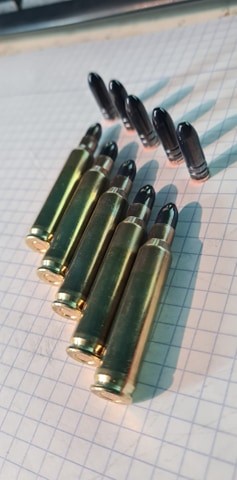Almost don't want to respond because it can lead to "more" questions than answers....oh well.
It's not "speed" that's at issue,it's imperfect bullets. The speed exponentially increases the problems. I shoot a metric tonne of cast 22's in mostly 22-250 but do have quite a few 223's. The latter get a steady diet of one of the 4198 powders. The 22-250's are happy with IMR4831.
Generally,a mould is going to need several casting sessions to get into their sweet spot,not always...
I strive for casting so that weighing becomes a waste of time. Yes,a new batch will hit a scale but along with checking "slump" of finished bullets,this is done to certify alloys moreso than consistency. If a seasoned caster is on his game,you can get the weight consistent to within .1 grain on a 50-70g 22 bullet. When you see .5 showing up,well... there's a hurdle.
Next is,conventional push through sizing is not doing you any favors. Oh,it'll make the bullet round,but it doesn't change the balance one iota. So either go unsized or roll size it(look up roll sizing cases). You can install GC's without sizing the whole bullet. Just like the weight,if your unsized bullets aren't round,before sizing.... well,sizing isn't going to help from a balance standpoint.
The window for accuracy is shrinking as velocity and pressure is raised. To many folks just want answers,and I get that. But it's a series of hurdles,each interacting within nanometers of each other. Take "slump" for example. I use a torque wrench as a handle on a lube sizer. Same alloy,same day,two different bullet moulds will have different slump(technically this is yield) numbers. Same with caliber of bullet.
I don't powder coat,so no comment there. But regularly shoot the 22's at starting JB velocity and pressure with the TINIEST amount of some pretty basic lube. Just the tiny spot above GC. Not saying lube isn't important but,compared to fit,roundness,and uber consistent weight.... it isn't. It causes more problems than it fixes. Not trying to dissuade your PC'ing effort but suggest it's adding another hurdle.... if you're trying to get JB velocity.


















